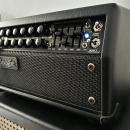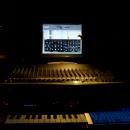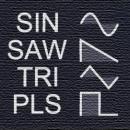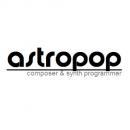rod_zero escribió:
lee las respuestas que dan, no me da la impresión que sean tipos mentirosos. Vamos que enfrentan las críticas que les hacen allá.
No tengo nada en contra de ellos, pero tecnológicamente hablando me parece que tienen ciertas lagunas "históricas"
o de contexto típicas de un lógico y defensivo movimiento empresarial. A mi sincéramente no me sorprende porque
ellos con toda normalidad no van a tirarse piedras en su propio tejado, pero vamos.. Que mienten un poco ¿ehh?.
rod_zero escribió:
También hay que decir que hay un mercado de músicos interesado no sólo en chorrocientas mil características, si no también en sonido, construcción y facilidad de uso.
Si, y de coleccionistas hábidos de exclusivas y tal o cual cuesten lo que cuesten.
Tienes que entender que esta gente sabe que existe un nicho dejado años atrás por otros fabricantes
(lo han repetido varias veces en sus entrevistas) y con eso saben que pueden ahora mismo ofrecer
este producto a un precio bastante más alto al normal. Que tampoco me creo que tengan tantos pedidos
como dicen tener y aquí perdoda sea incisivo me parece que un sinte digital con filtros analógicos no
cuesta 5000€. Esto lo voy a llamar efecto placebo para almas despistadas.
Mira.. seamos un poco más exigentes y valoremos lo que realmente ofrece este fabricante y al
precio al que lo vende.
Yo parto de unas premisas sobre la mesa que son bastante simples:
Tecnológicamente hablando vamos a ponerlas encima de la mesa y luego si quieres me discutes sin voy
o no voy por buén camino. ¿Vale?
Que tenemos aquí: 12 voces, osciladores digitales (si, digitales no se te olvide) unas limitadísimas
rutinas de modulación, un par de LFO´S, un filtro ladder analógico común para todas las partes del
sonido, un secuenciador por pasos y una interface de usuario más o menos intuitiva.
Que no tenemos: No existe modulación en anillo, no existe FM, no existe matriz de modulación avanzada,
no existen modificadores en la sección de osciladores, no existen modos de disparo de envolventes, ni
envolventes multipunto, no existen efectos aún y no existen memorias mas que 12 míserables memorias
de interpretación de acceso directo. Pues mira a mi sincéramente no se me apetece pagar 5000€ por
tener un sinte que me permite menos capacidad de control que mi anticualla de Oberheim Matrix-1000.

Un Oberheim Matrix 12 costaba más o menos lo mismo cuando salió al mercado y si me permites la osadía
de encajar este aparato aquí, pues aún con sus más de 25 años de antiguedad le pega una patada en la
espinilla a este sinte "híbrido". Sin irse más lejos el Prophet 12 le gana por goleada a este también.
Y sobre calidades de construcción pues el Matrix era y es un tanque Leopard de combate.
Este lo veo un poco más "metro sexual".

Que no, a mi personalmente no me sirve el marqueting de esta gente y no puedo darles una palmadita en
la espalda, aunque si apoye la valentía de sacar algo para darle un poco de vidilla al mundo hardware.
Que otras personas entiendan el concepto y valoren otras opciones sobre el diseño de este
aparato me parece correcto pero con la lista de opciones, técnicas y siendo honestos o mirando hacia sus
rivales me parece sencíllamente "efecto placebo" y típico marketing como el que usan las marcas de lujo.
Y este para mi no es ningún lujo de características, aunque es mi particular opinión.
Nox escribió:
Lo siento pero sigo diciendo lo mismo, ya no es SOLO cuestión de características, es que están excusando la falta de características en mentiras descaradas. Además es una actitud que no termino de entender, porque no es que sean mentiras difíciles de descubrir, es decir, no es necesario someter a interrogatorio a Dave smith, a un diseñador de alesis o al de mutable instruments para saber que el P12, el Andromeda y el ambika se comen a este sinte por las patas parriba, y ni se enteran.
Hombre, que el andromeda tenía como 70 orígenes de modulación, por Dios, que este sinte salió hace TRECE años y ahora esta gente dice que no ha existido sinte con esas características, es absurdo.
Desde luego que es absurdo, y mucho..
Pero a mi ya sincéramente me dieron la patada en el trasero al comentarme que la modulación en anillo era un lujo
asiático en los sintetizadores analógicos.
El Andrómeda también costaba bastante menos que su modulus, incluso cuando estuvo en su précio más
álgido apenas llegó a los 3500€. ¡El suyo cuesta bastante más!
Pues eso, marketing de Maripopins injustificable.
Edito:
Ellos dicen lo siguiente:
"Whilst I understand the obvious comparisons between the P12 and 002, they are two very different beasts sonically, you might as well compare a CS80 and Jupiter 8, both are stunning sounding, but both very different sonically and in approach".
¡Juss! Resulta que Yamaha y Roland cuando sacaron ambas bestias intentaban competir con lo más
selecto de la tecnología mundial en sintetizadores, crear su buque insignia y ser referente o envidía
con otros fabricantes.
¿Con este Modulus creeis estar en la misma filosofía? ¡Pues vaya! A mi se me antoja un pelín
escaso de todo eso, en serio.
¡Saludos!
 Vaya pinta que tiene.
Vaya pinta que tiene. Vaya pinta que tiene.
Vaya pinta que tiene.





 ¿El primer sinte híbrido analógico de los últimos 30 años?
¿El primer sinte híbrido analógico de los últimos 30 años? 











